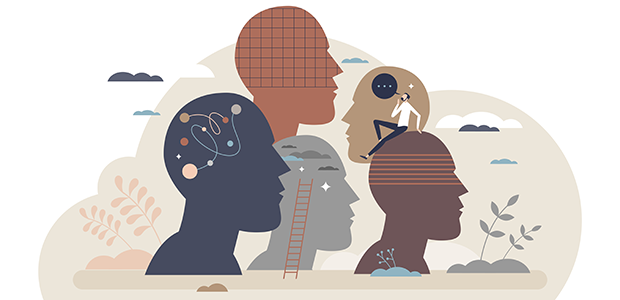
6 tips for accommodating neurodiversity in the workplace
With around 15-20% of the global population exhibiting some form of neurodiversity according to the National Library of Medicine, it's crucial to design office spaces that embrace inclusion and neurodiversity.
Tailoring the environment to accommodate diverse cognitive perspectives isn't just about promoting wellbeing.
"The workplace is a rich mix of different profiles and therefore unique needs. It is crucial to create inclusive workplaces that accommodate and support all employees, regardless of their physical or mental abilities. Inclusive design aims to remove the barriers that create effort and separation, and enables everyone to participate equally, confidently, and independently. Inclusive environments minimise friction and boost productivity," says Guenaelle Watson, Managing Director at 360 Workplace and member of Europe's only workplace alliance, Studio Alliance.
To help businesses create inclusive and neurodivergent-friendly spaces, Studio Alliance's office design experts have offered six practical tips.
- Flexible workstations: flexibility in workstation design allows individuals to choose an environment that suits their needs. Neurodiverse individuals may have different sensory preferences, and providing options for standing desks, quiet corners, or collaborative spaces caters to various work styles. This supports the diverse needs of employees, enhancing their comfort and productivity
- Sensory considerations: sensory-friendly design is crucial for neurodiverse individuals who may be sensitive to light, sound, or other stimuli. Use adjustable lighting, noise-cancelling features, and acoustically designed spaces to create an environment that minimises distractions. This promotes a more comfortable and focused work atmosphere for everyone
- Quiet spaces and retreats: having designated quiet spaces allows individuals to take a break and recharge. This is particularly beneficial for neurodiverse employees needing a reprieve from overstimulating environments. Quiet retreats provide a space for relaxation, concentration, and stress reduction, contributing to overall wellbeing
- Clear navigation and signage: clear signage and well-defined pathways assist individuals in navigating the office space quickly. Neurodiverse individuals, who may experience challenges with spatial orientation or changes in routine, benefit from a well-organised layout. Consistent and intuitive signage helps reduce anxiety and enhances accessibility
- Diverse meeting spaces: create various meeting spaces to accommodate different communication styles and preferences. Some neurodiverse individuals may feel more comfortable in one-on-one meetings or small groups, while others may thrive in larger, more collaborative settings. Offering a range of meeting spaces supports diverse communication needs and fosters inclusivity
- Employee input and feedback: involve employees, including neurodiverse individuals, in the design process. Gather feedback on the current workspace and ask for suggestions for improvement. This participatory approach ensures that the design is genuinely inclusive and meets the workforce's specific needs. It also fosters a sense of belonging and empowers employees to contribute to a more supportive work environment.

